the nirvana farmhouse in the small town of khadavli gently blends into the green landscape to impersonate a quiet retreat. based on the banks of the river ulhas on the fringes of the city of mumbai, put your hands together – bioarchitects, conceived a rustic farmhouse reflective of its immediate surroundings in its structure, form and materiality. adapting and accepting ideas to flow from the traditional topographical setting, the architectural style finds its base in critical regionalism.
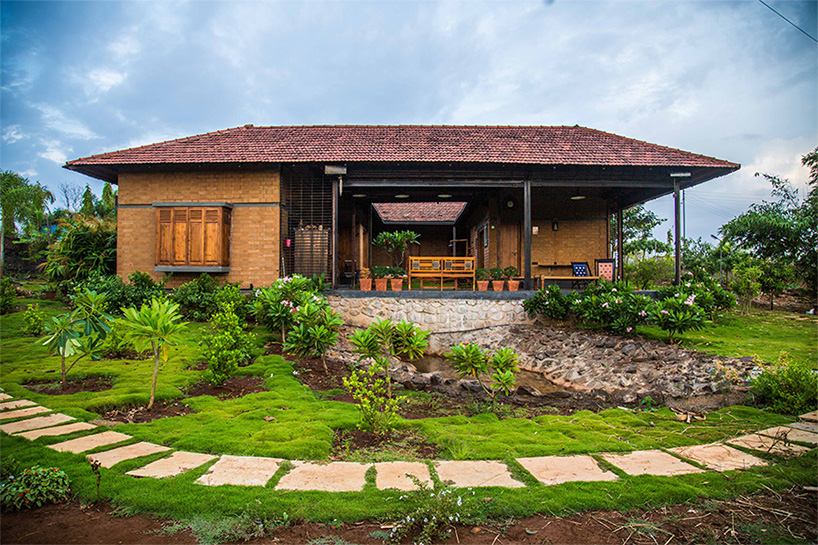
architect and partner of put your hands together, areen attari, describes the simple and traditional design motifs used throughout the project as ‘form and function are best friends.’ void of heavy ornamentation of crafts typical to the region, the style is reinforced in its measured and meaningful décor elements. overlooking around two acre of farmland, the once barren land now encompasses a 3,000 sq. ft. home along with a functionally landscaped garden.
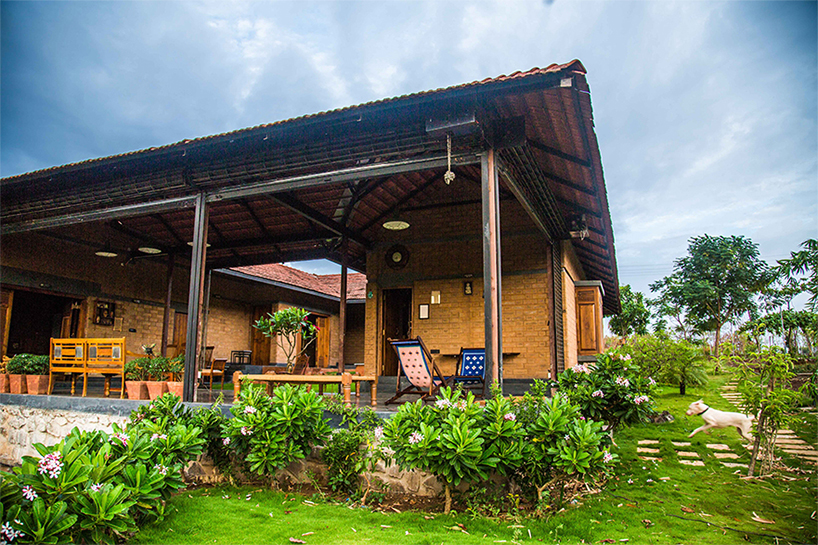
locally available black basalt stone was used to create the load bearing strip foundation. instead of rammed earth, compressed stabilized earth blocks were chosen keeping in mind the locally available labor. these bricks were used to make the 12” thick walls that have an exceptionally high thermal mass to keep the rooms cool in summers and warm in the winters.
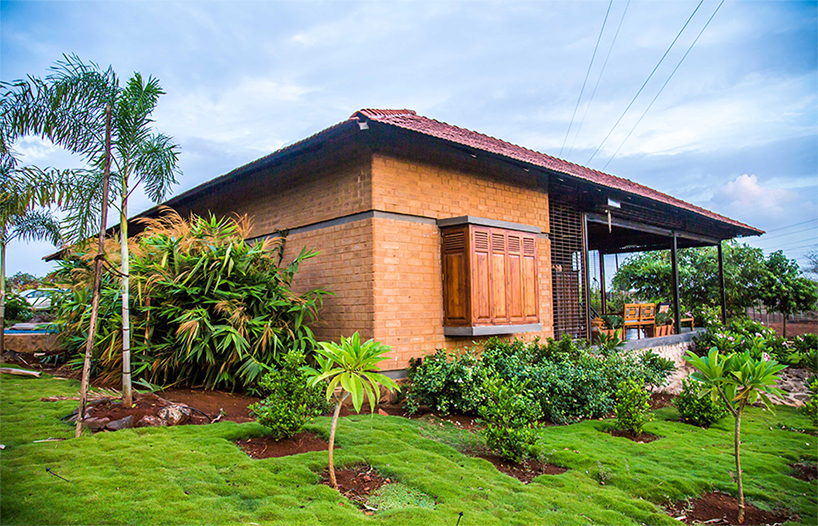
sticking to the brief of using local and natural tones ‘each space has one wall plastered in cement mixed with natural oxide, to add colour to the otherwise earthy, natural tone’, says shahveer irani, one of the architects involved in the project when discussing the prevalent regional style. when completing the structure, red mangalore roof tiles were chosen based on the functionality they provide in this dense rainfall area. the metal fabricated roof also has a false ceiling made of pine wood planks that creates a buffer layer to prevent heat gain from above.
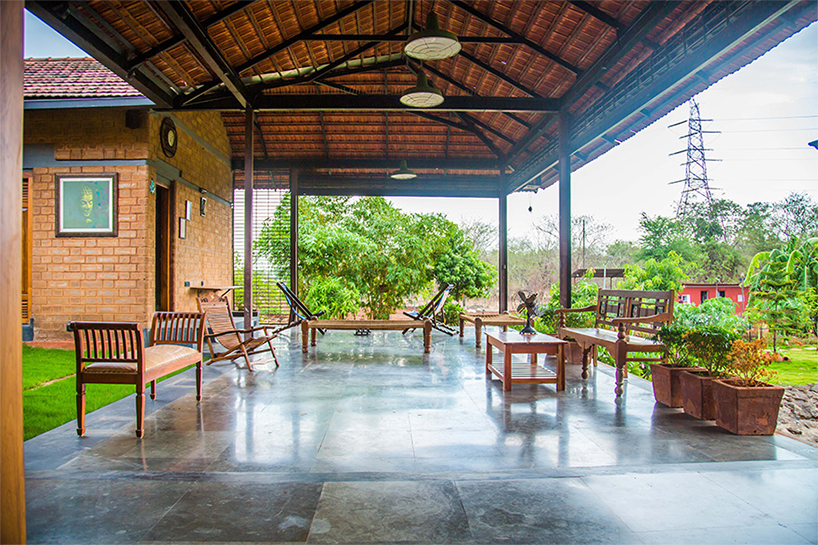
accentuating natural light, the open floor plan provides for cross ventilation with all rooms opening up to the courtyard. open verandas further offer an unobstructed view of the farm. all the furniture pieces used are handpicked from recycled markets, like the nearvy chor bazaar, and some pieces have been restored by the architects. ‘since all the furniture was recycled or restored we had to work with the dimensions of what was available, the causality of which affected the architecture. so we had to program spaces so that they could fit in furniture of varying sizes’, adds irani.

the material palette is broad, yet local, creating a well-blended mix that is cohesive with the home’s aesthetic. the foundation is made of black basalt stone, available from local quarries in this region of maharashtra, and cement mortar strip foundation. plain cement concrete to prevent ground water to reach the cseb. the walls are compressed stabilised earth blocks 12x9x6 inches. 12-inch thick wall to increase the thermal mass of the walls. flemish bond for aesthetic purpose.
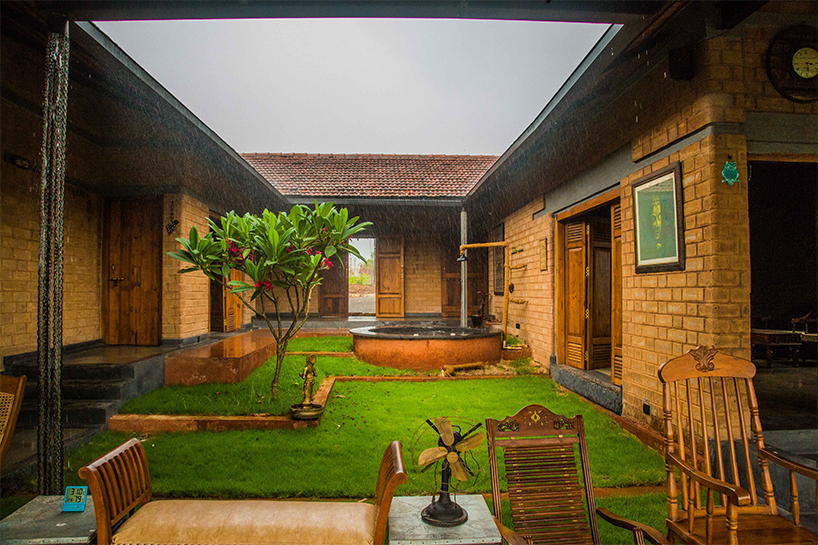
the roof is made of metal framework with mangalore tiles with pine wood heat buffer layer under. metal for economical reason over wooden frame and also for recyclability. the pinewood under layer creates an insulating heat buffer from the heat gain through the roof. light fitting: almost all of the light fitting have been refurbished and recycled from old ships or homes. most lights have led fittings.
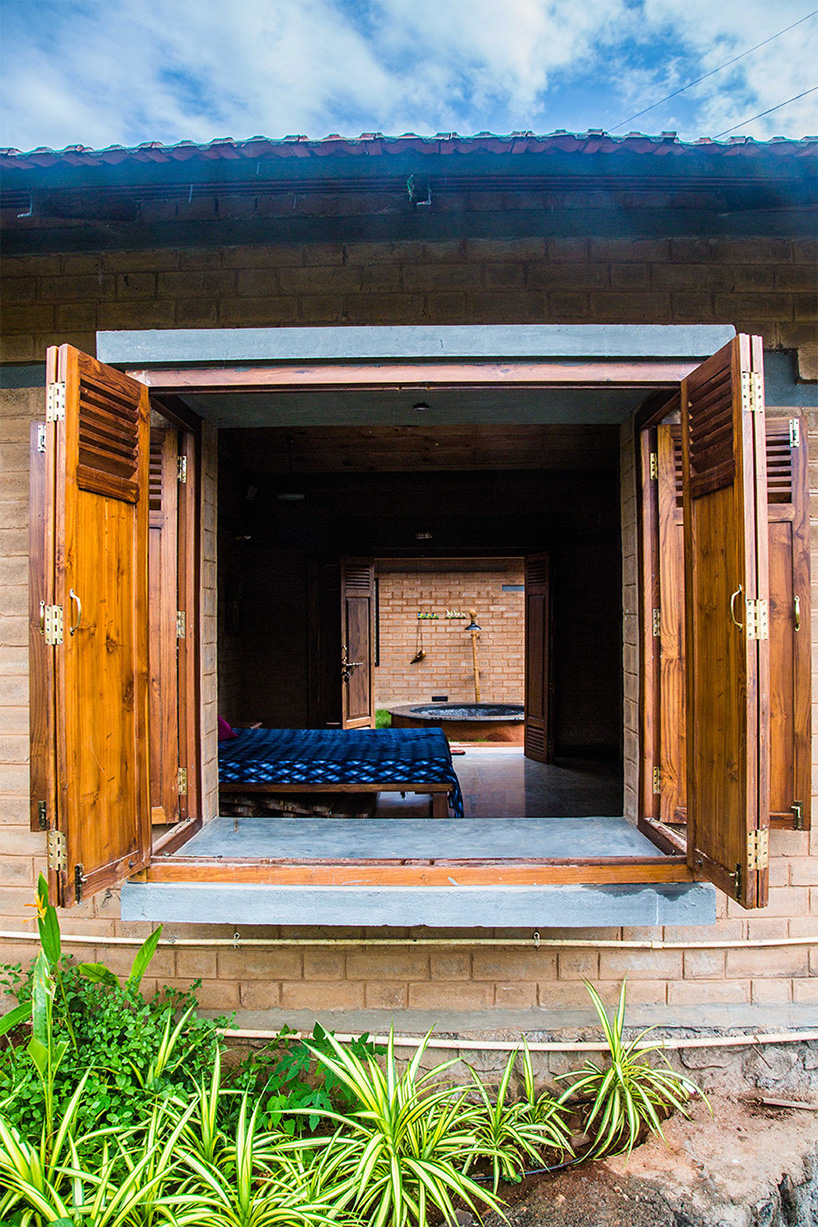
certain walls have been rendered with a cement and natural pigment mix. light colours were used and the surface is also mirror polished to increase reflection of natural light. as for the doors and windows, solid teak wood was used with panels and louvers. large openings were possible with the use of wood since openings let the heat in while the wooden shutters prevent heat from entering. the louvers also allow for cross ventilation even when the shutters are closed.
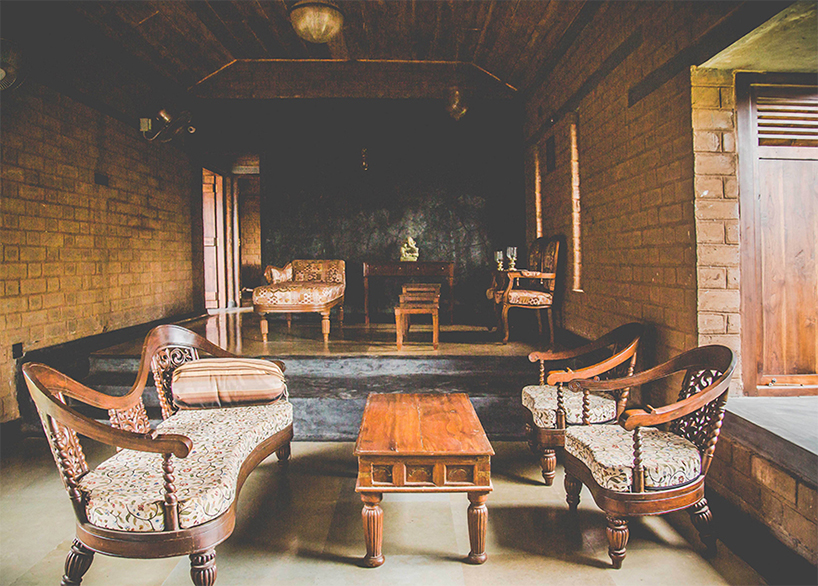
the flooring is composed of limestone, and although the material is not local, its the most commonly available stone and will last for the entire life of the building. limestone is also non-toxic when the building has served its life. it is finished with a mirror polish to act as a reflective surface for the natural light. the house also makes use of the immediate landscape, which reduces heat gain because of the shadows and from reflective heat from the ground by using green ground cover, which cools when the wind blows.
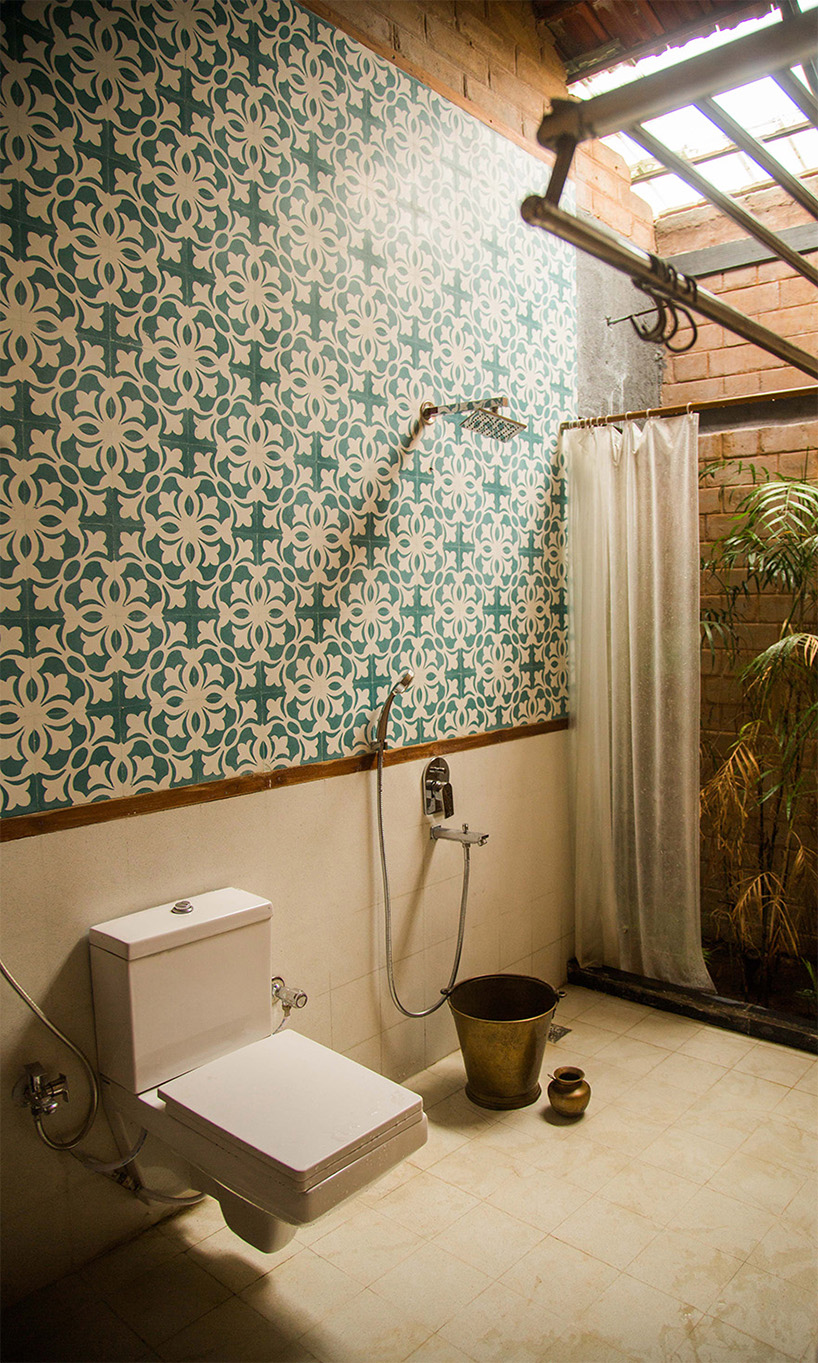
the residence’s circulation path begins through the entrance, which leads guests through the door that opens into the courtyard, opening to a view of the entire farm through the open living space. the house is surrounding the courtyard, which acts as an interactive space and also helps with ventilation and light. all rooms open into this courtyard. the south wall has minimum openings to reduce with south heat gain, amplifying the materiality and texture of the building.
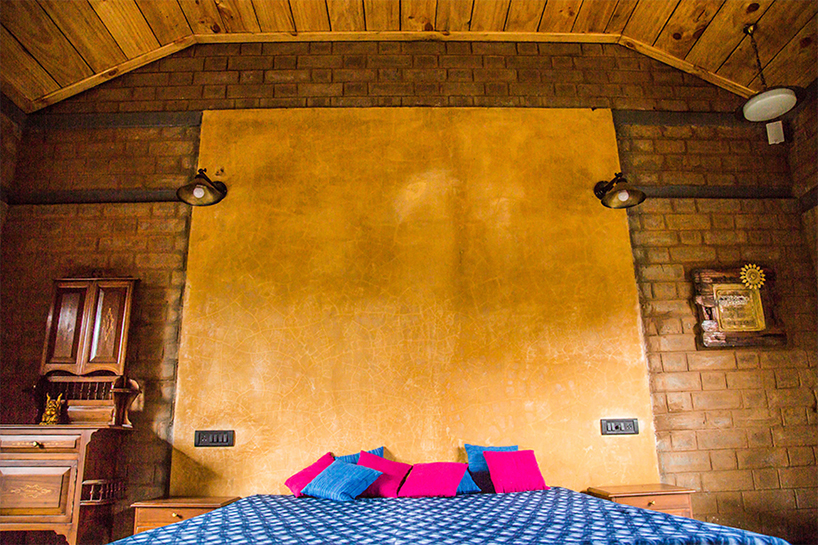
the southwest corner for the rectangular plan is an covered space which serves as an outdoor living space and climatically helps by shading the other spaces from the harsh south west sun and also from the monsoon winds. all the architectural elements and spaces come together to create a well-blended mix, adding panache to the interiors. the home, engulfed in the natural climate and geography provides a liberating regional experience.
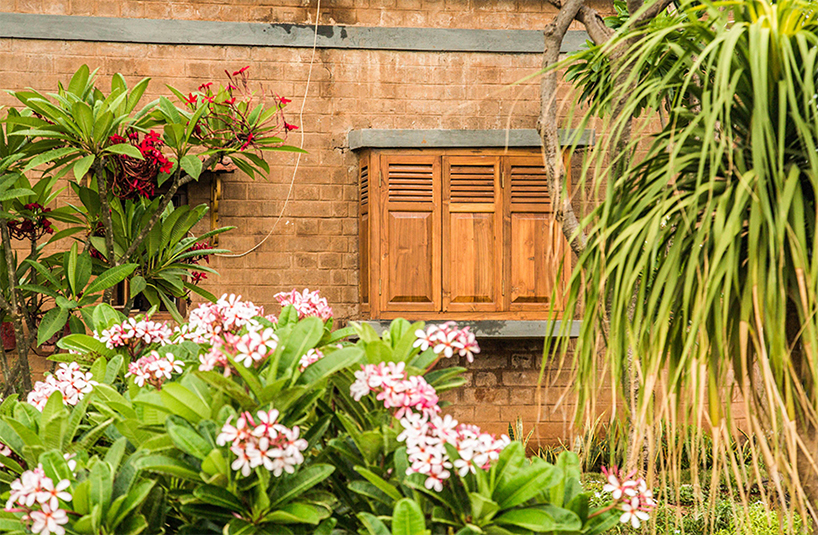
.
